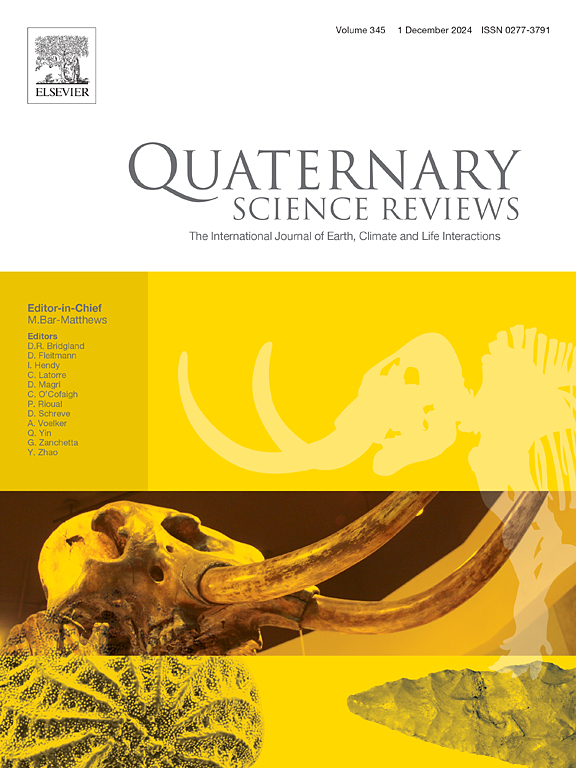Decoupled winter and summer climate changes in southern Europe during the Dansgaard-Oeschger cycles
IF 3.3
1区 地球科学
Q1 GEOGRAPHY, PHYSICAL
引用次数: 0
Abstract
The marine isotope stage 3 (MIS 3) (∼60–30 ka) exhibits large amplitude millennial climatic oscillations, also named Dansgaard-Oeschger (DO) cycles, which are marked by alternation of warm (GIs – Greenland interstadials) and cold phases (GSs – Greenland stadials). Here, we explore the seasonal nature of the DO cycle climate signal in southern Europe using 12 pollen records that allowed us to reconstruct the vegetation types and key climatic parameters such as seasonal temperatures and precipitation. Our results show the development of arboreal vegetation during GIs and non-arboreal vegetation during GSs. They also indicate that vegetation changes were mainly driven by winter precipitation and temperatures, with high and low values during GIs and GSs, respectively. The results tend to demonstrate a decoupling between winter and summer conditions, with relatively stable and warm summer temperatures throughout MIS 3, but large amplitude variations in winter. We infer that the climate over southern Europe was mainly influenced by surface conditions over the North Atlantic driven by stratification due to meltwater discharge, and also possibly by extension/contraction of the subpolar gyre (SPG) through changes in the westerlies’ strength, thus impacting the extent of winter sea-ice cover, temperature and moisture availability over southern Europe.
Dansgaard-Oeschger循环期间南欧冬季和夏季气候变化的分离
海洋同位素阶段3 (MIS 3) (~ 60-30 ka)表现出千禧年的大振幅气候振荡,也被称为Dansgaard-Oeschger (DO)旋回,其特征是暖期(GIs -格陵兰间冰期)和冷期(GSs -格陵兰间冰期)交替。在这里,我们利用12个花粉记录来探索南欧DO循环气候信号的季节性质,使我们能够重建植被类型和关键气候参数,如季节温度和降水。研究结果表明,地理信息系统期间树木植被发育,地理信息系统期间非树木植被发育。植被变化主要受冬季降水和气温的驱动,在GIs和gs期间分别表现为高值和低值。结果表明冬季和夏季条件之间存在解耦,整个MIS 3的夏季温度相对稳定和温暖,但冬季变化幅度较大。我们推断,南欧的气候主要受到由融水排放引起的分层驱动的北大西洋表面条件的影响,也可能受到西风带强度变化引起的次极环流(SPG)伸展/收缩的影响,从而影响南欧冬季海冰覆盖范围、温度和水分可用性。
本文章由计算机程序翻译,如有差异,请以英文原文为准。
求助全文
约1分钟内获得全文
求助全文
来源期刊

Quaternary Science Reviews
地学-地球科学综合
CiteScore
7.50
自引率
15.00%
发文量
388
审稿时长
3 months
期刊介绍:
Quaternary Science Reviews caters for all aspects of Quaternary science, and includes, for example, geology, geomorphology, geography, archaeology, soil science, palaeobotany, palaeontology, palaeoclimatology and the full range of applicable dating methods. The dividing line between what constitutes the review paper and one which contains new original data is not easy to establish, so QSR also publishes papers with new data especially if these perform a review function. All the Quaternary sciences are changing rapidly and subject to re-evaluation as the pace of discovery quickens; thus the diverse but comprehensive role of Quaternary Science Reviews keeps readers abreast of the wider issues relating to new developments in the field.
 求助内容:
求助内容: 应助结果提醒方式:
应助结果提醒方式:


